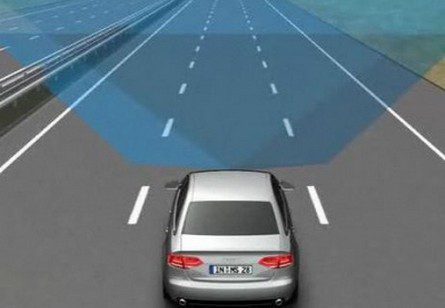
Automotive differential: device, malfunctions and selection method
Content
In the technical documentation of full-fledged SUVs, some crossovers and all-wheel drive city cars, there is the phrase "differential lock". Let's figure out what it is, what is its purpose in the car, how it works, and also how to choose a new one to replace the failed one.
What is machine differential
The differential in a car is a transmission element. It provides independent rotation of the drive wheels, but at the same time transmits the same torque to each of them.
This element is especially important for the stability of the car in bends. We know from physics that when turning, a wheel on the inside of a semicircle travels a shorter path than a wheel on the outside of a circle. In the case of driven wheels, this is not felt at all.
As for the drive wheels, if there was no differential in the transmission, any car would significantly lose stability during turns. The problem is that the outer and inner wheels must rotate at different speeds when cornering in order to maintain grip. Otherwise, one of the wheels would either slide or slip.

The differential is installed on the drive axle. In the case of vehicles with four-wheel drive (SUV or 4x4 class), this mechanism is available on all axles.
In some cars, the differential is welded specifically to keep the car drifting. An example of this are two-wheel drive rally cars with a welded differential. However, for regular city driving, it is better to use a factory differential, or, as it is also called, an open differential.
Differential history and purpose
The design of the differential appeared almost simultaneously with the start of production of vehicles equipped with an internal combustion engine. The difference was only a couple of years.
The first cars were so unstable when cornering that engineers had to puzzle over how to transfer the same thrust to the drive wheels, but at the same time make them so that they could rotate at different speeds when cornering.
Although it cannot be said that the mechanism itself was developed after the appearance of cars with internal combustion engines. The fact is that to solve the handling of the first cars, a development was borrowed, which had previously been used on steam carriages.
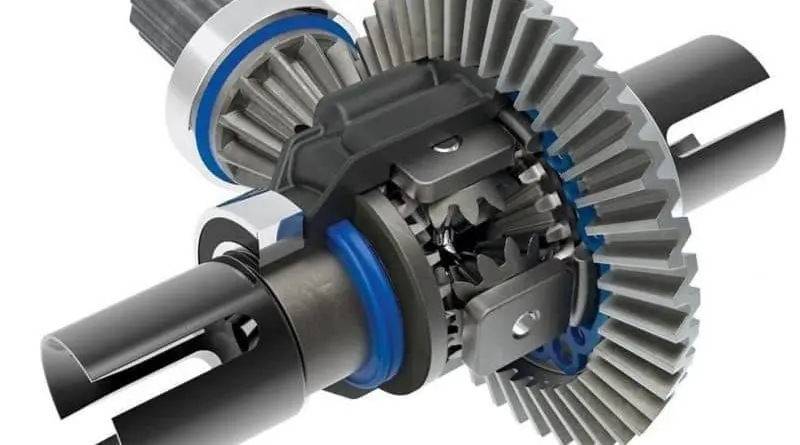
The mechanism itself was developed by an engineer from France - Onesifor Pekker in 1825. Ferdinand Porsche continued the work on the slip wheel in the car. In collaboration between his company and ZF AG (Friedrichshafen), a cam differential was developed (1935).
The massive use of LSD differentials began in 1956. The technology was used by all automakers as it opened up new possibilities for four-wheeled vehicles.
Differential device
The differential was based on a planetary gearbox. A simple gearbox consists of two gears that have different numbers of teeth of the same size (for constant mesh).
When the larger gear rotates, the smaller one makes more revolutions around its axis. The planetary modification provides not only the transmission of torque to the drive axle, but also converts it so that the speeds of the driving and driven shafts are different. In addition to the usual gear transmission in planetary gearboxes, several additional elements are used that interact with three main ones.
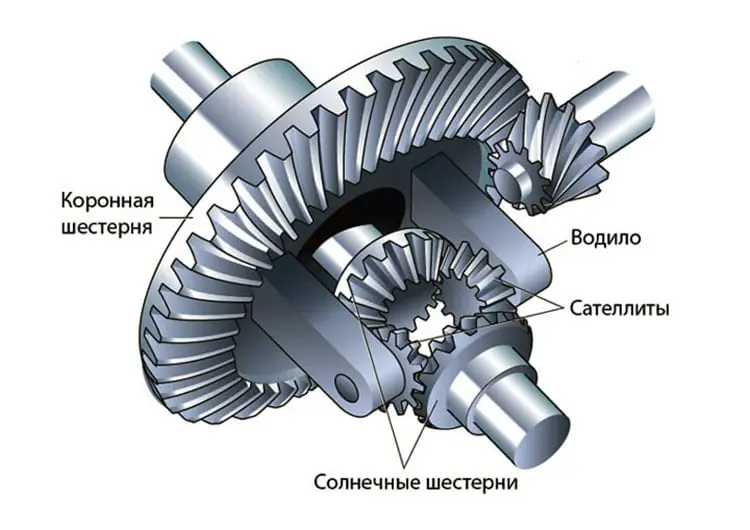
The differential uses the full potential of planetary gearboxes. Due to the fact that such a mechanism has two degrees of freedom and allows you to change the gear ratio, such mechanisms have proven to be effective for ensuring the stability of the driving wheels rotating at different speeds.
The differential device includes:
- Differential housing or cup. The entire planetary gear and gears are fixed in it;
- Semiaxis gears (solar type is most often used). Receive torque from the satellites and transmit to the drive wheels;
- Driven and driving gears of the main transfer;
- Satellites. They function as planetary gears. If the car is a passenger car, then there will be two such parts in one mechanism. In SUVs and trucks, the planetary gear has 4 satellites.
Differential operation diagram
There are two types of such mechanisms - symmetric and asymmetrical differential. The first modification is capable of transmitting torque to the axle shaft equally. Their operation is not affected by the angular speeds of the driving wheels.
The second modification provides adjustment of the torque between the wheels of the drive axle if they begin to rotate at different speeds. Often, such a differential is installed between the axles of an all-wheel drive vehicle.
More details about the modes of operation of the differential. The mechanism works differently in such situations:
- The car goes straight;
- The car is making a maneuver;
- The drive wheels begin to slip.
This is how the differential works:
With straight motion
When the car is going straight, the satellites are simply the link between the axle gears. The wheels of the car rotate at the same speed, so the cup rotates like a single pipe that connects both axle shafts.
The torque is evenly distributed between the two wheels. The wheel revolutions correspond to the revolutions of the pinion gear.
When turning
When the machine maneuvers, the wheel in the outer turning radius makes more revolutions than the one in the inner turning radius. The inner wheel encounters a lot of resistance as the torque for the outer wheel increases and the road prevents it from rotating at the appropriate speed.
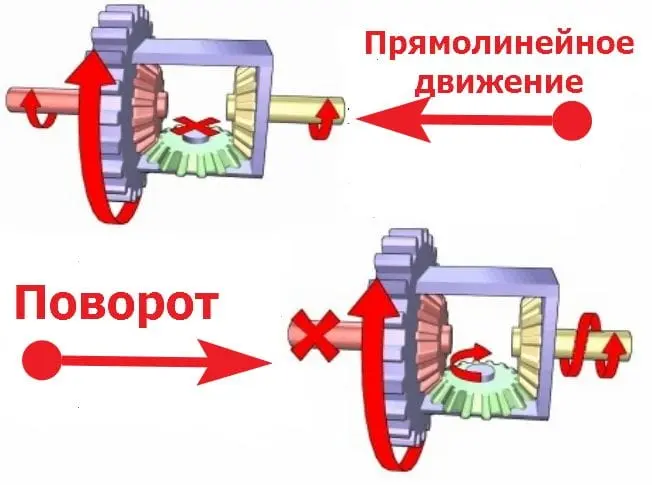

In this case, the satellites come into play. The gear wheel of the inner axle shaft slows down, because of which the planetary gear in the cup starts rotating in the opposite direction. This mechanism allows you to maintain the stability of the car even on tight and tight turns. It also prevents excessive tire wear on the decelerating wheel.
When slipping
The third situation in which the differential is useful is wheel slip. This happens, for example, when a car gets into mud or moves on ice. In this mode, the differential works on a completely different principle than when cornering.
The fact is that when slipping, the suspended wheel begins to rotate freely, which leads to a loss of torque on the wheel that has sufficient adhesion to the road surface. If the differential worked in cornering mode, getting into mud or ice, the car would stop altogether, since traction would be completely lost.
To eliminate this problem, engineers have developed a limited slip differential. We'll talk about his work a little later. First, it is worth considering the existing modifications of differentials and their differences.
Differential types
If the car has one drive axle, then it will be equipped with a cross-axle differential. An all-wheel drive vehicle uses a center differential. On front-wheel drive cars, this mechanism is also called a front differential, and models in rear-wheel drive cars are called a rear differential.
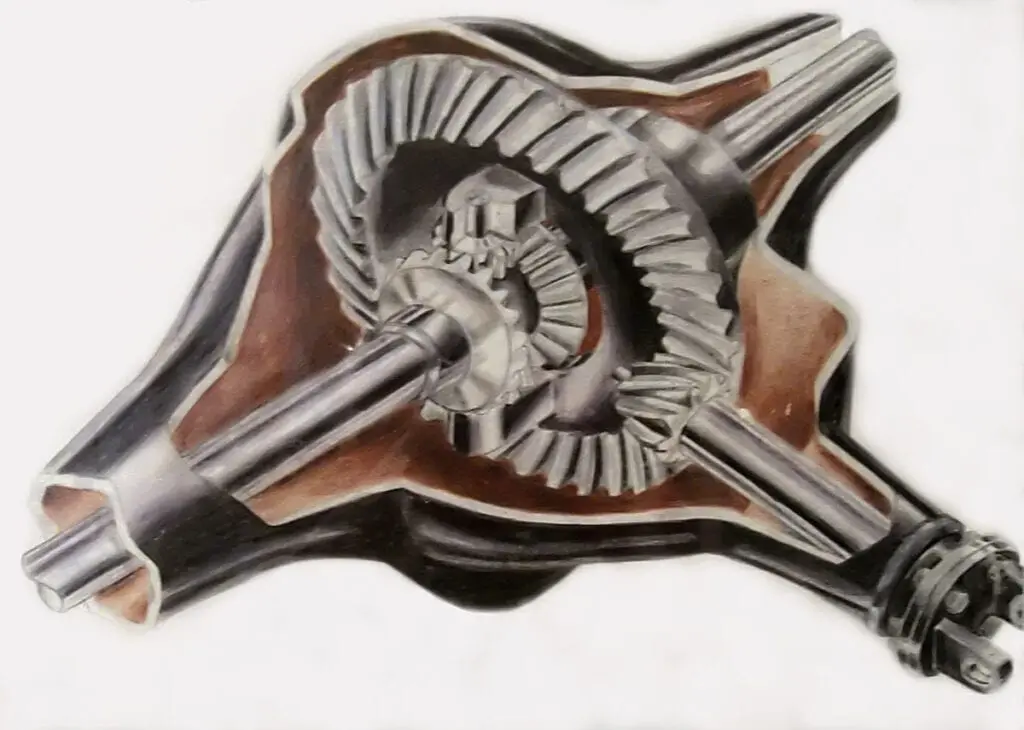

These mechanisms are divided into three categories according to the type of gears:
- Bevel differential;
- Worm gear differential;
- Cylindrical differential.
They differ among themselves by the shape of the main and axial gears. Conical modifications are installed in front- and rear-wheel drive vehicles. Cylindrical ones are used in all-wheel drive models, and worm gears are suitable for all types of transmissions.
Depending on the car model and the road conditions in which the vehicle is operated, the following types of differentials will be useful:
- Mechanical interlock;
- Self-locking differential;
- Electrical interlocking.
Mechanically locked differentials
In this modification, the satellites are blocked by the driver himself using special switches on the wheels. When the machine is in a straight line or turns, the differential will operate normally.
As soon as a car hits a road with an unstable surface, for example, drives into a forest with mud or a snowy road, the driver moves the levers to the desired position, so that the satellites are blocked.
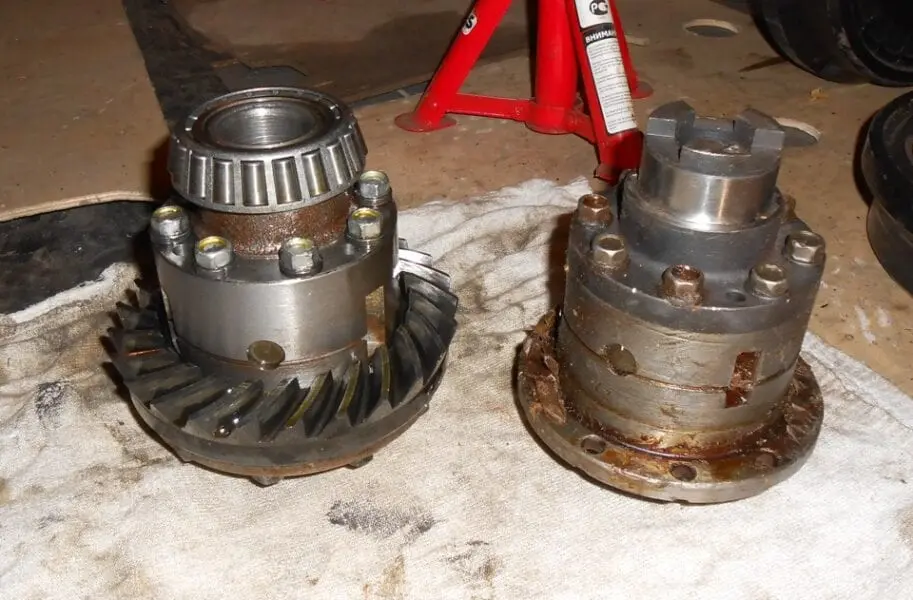

In this mode, the planetary gear does not work, and the car, in principle, is without a differential. All drive wheels rotate at the same speed, which prevents slipping, and traction is maintained on all wheels.
Such mechanisms have a simpler device and are installed on some budget SUVs, such as in domestic UAZs. Since the tires do not wear out excessively when driving slowly through the mud, this design does not harm the tires of the car.
Self-locking differential
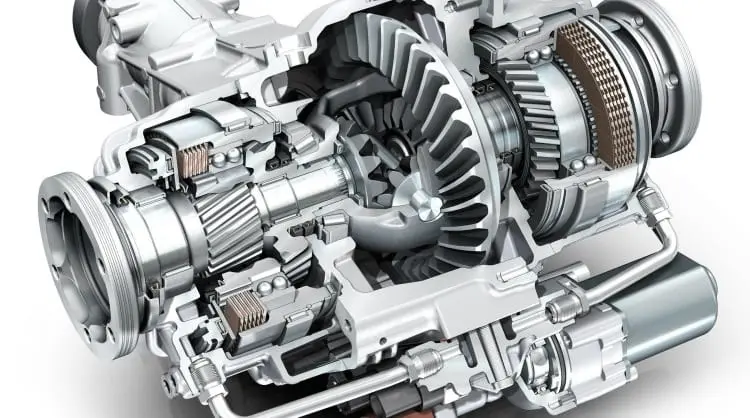

There are several types of mechanisms in this category. Examples of such devices are:
- LSD. In such gearboxes, with excessively high rotation of one of the axle shafts, the satellites are automatically locked. This prevents the stable wheel from losing traction;
- Viscous clutch. These differentials use a viscous silicone-based substance. In a cool state, it remains in a liquid state. As soon as it starts to heat up and mix, the properties of the substance change, and it acquires a sticky structure, which increases its viscosity. This characteristic increases with an increase in the difference in the rotation of the axle shafts. Viscous couplings have several significant disadvantages. First, they are not repaired. When the substance loses its properties, the entire block needs to be replaced. Secondly, blocking occurs when there is a strong wheel slip, so the car does not always effectively cope with off-road conditions. Despite these shortcomings, the mechanism differs in budgetary price. Most low-cost crossovers are equipped with just such differentials.
- Torsen. The torso uses a worm lock. When the torque coefficient on one axle shaft increases or decreases in relation to the other axle shaft, the lock is activated. This technology is used, for example, in Audi vehicles. The device can also be classified as mechanically interlocked mechanisms. It is considered the most reliable of all types of differentials and is distinguished by its simplicity. For this reason, they are expensive.
Electrical interlocking
Such differentials are associated with the electronics of the vehicle. They are considered the most expensive because they have a complex structure and a blocking drive. This mechanism is associated with the vehicle's ECU, which receives data from systems that monitor the rotation of the wheels, such as ABS. In some vehicles, the automatic locking can be disabled. For this, there is a special button on the control panel.
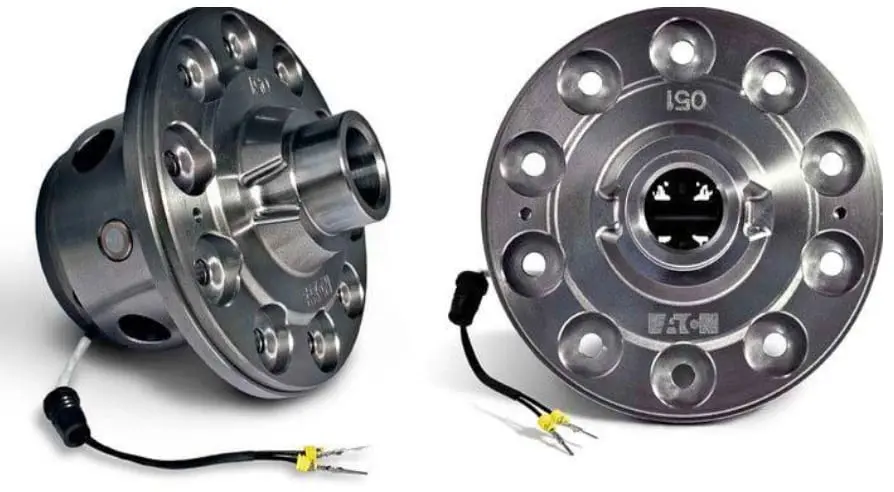

The advantage of electronic options is that they allow you to set several degrees of blocking. Another plus of such mechanisms is that they perfectly help to cope with oversteer. In such models, the torque is applied to the axle gear, which rotates at a lower speed.
More on differential lock
Any cross-axle differential has a significant drawback - the torque is automatically supplied to the wheel, which rotates harder. Because of this, the second wheel, which has sufficient traction, loses traction. For this reason, such a gearbox will not provide an opportunity to independently get out of the mud or snowdrift.
As mentioned earlier, the problem is solved by blocking satellites. There are two blocking modes:
- Full blocking is carried out due to the fact that all elements of the gearbox are rigidly coupled. This ensures that the wheel with the best grip receives sufficient torque;
- Partial blocking is possible by changing the blocking factor. When the car is driving in a straight line, this factor is 1. As soon as the satellites are locked in the symmetrical differential, this factor changes from 3 to 5. In this case, the spinning wheel continues to rotate, but it receives less torque.
Here is a video on why the differential is blocked:


Watch this video on YouTube
Differential malfunctions
Given that the design of any differential uses the interaction of gears and axles, such a mechanism is susceptible to rapid wear and breakdown. The elements of the planetary gear are under a serious load, therefore, without proper maintenance, they will quickly fail.
Although the gears are made of durable materials, the mechanism is worth paying attention to if there is increased noise, knocking and vibration while driving, which were not there before. Also an alarming moment is the lubricant leak. Worst of all, if the mechanism is jammed. However, with proper maintenance, this rarely happens.
You need to contact a car service as soon as an oil leak appears from the gearbox housing. You can check the node yourself. In addition to a visual inspection after a trip, you can check the temperature of the oil in the gear case. During normal operation of the mechanism, this figure will be about 60 degrees. If the differential heats up much more, then you should seek the advice of a specialist.
As part of routine maintenance, the lubricant level and quality should be checked. Each manufacturer of transmission oil establishes its own regulations for its replacement. Do not ignore this recommendation, as the oil may contain small abrasive particles that will damage the gear teeth, as well as destroy the oil film that prevents friction of metal parts.
If, as a result of a visual inspection, a leakage of the center differential was noticed or a similar problem is observed with analogs of a front-wheel drive car, the oil seal should be replaced. A decrease in the lubricant level leads to increased friction of the parts, which significantly reduces the working life of the device. Running the gearbox dry makes the satellites, bearing and axle gears unusable.
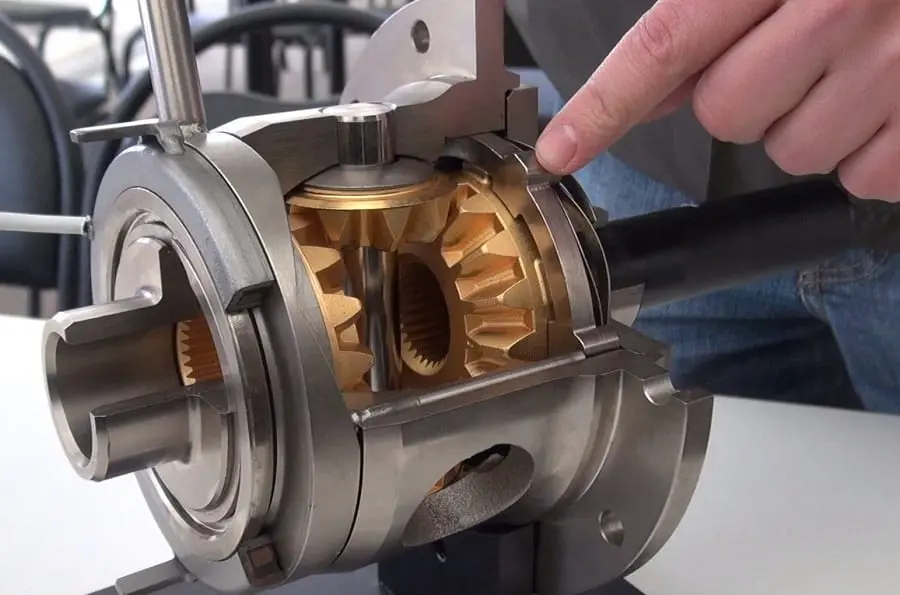

Self-diagnosis of the differential is carried out as follows. First, jack up the drive axle of the car. The transmission is shifted to neutral. One wheel rotates first in one direction and then in the other direction. The same procedure is done with the second wheel.
With a working differential, the wheels will rotate without play and noise. Also, some faults can be eliminated by yourself. For this, the gearbox is removed, disassembled and all its elements are washed in gasoline (to identify defective spots). During this procedure, you can find the backlash of the satellites and the development on the gears.
Worn out elements are removed, and new parts are installed instead. Basically, satellites, bearings and oil seals are subject to replacement, as they fail faster. The satellites are adjusted by selecting gears with a minimum clearance between the teeth.
Here's another video on how to adjust differential bearing preload:


Watch this video on YouTube
Finding a new differential
Despite the fact that an inter-wheel or center differential is easy to find in the auto parts market, its cost is quite high (a new part can cost from hundreds to thousands of dollars). For this reason, most motorists rarely agree to a complete replacement of the mechanism.
A new mechanism or its individual elements can be found in the same way as regular auto parts. The easiest way is to go to a store and ask for a specific part for a given vehicle. However, this applies if the vehicle has not been upgraded. Otherwise, the part is selected according to the unit code or according to the car model from which the spare part was removed.
It is best to search for a part by car data, and not by product code, since these symbols can only be found after dismantling the mechanism. This node has a lot of modifications. Even for the same brand of car, different differentials may be used.
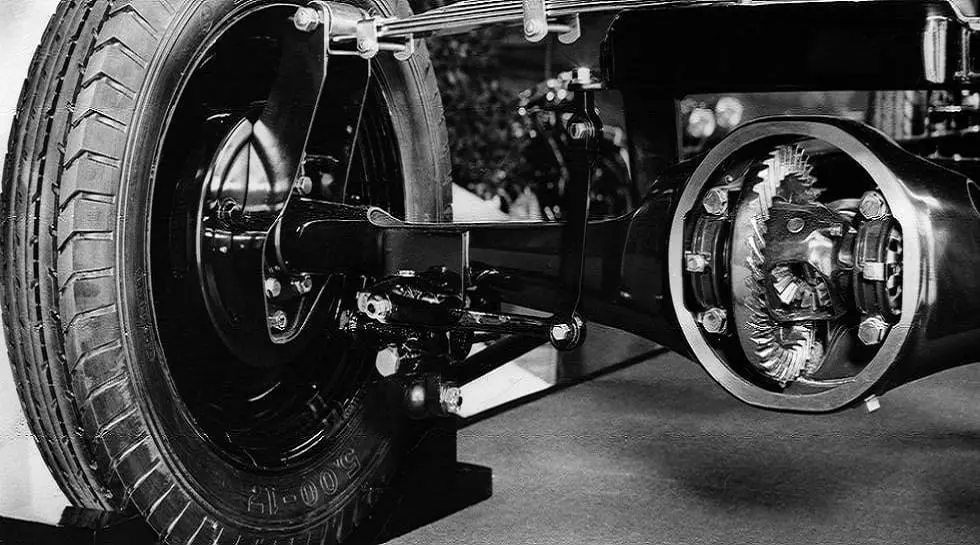

Given this moment, it is extremely difficult to find the perfect analogue from another car. As for the purchase of a differential in the secondary market, this is left at the peril and risk of the car owner himself, since no one will disassemble and check the condition of the part. This increases the risk of buying a heavily worn mechanism.
Summing up, it is worth saying that without a differential it is impossible to create a safe and efficient car, although fans of twisting dimes on dry asphalt will argue with this.
Questions and answers:
What is a differential in a car in simple terms? It is a mechanical element that is installed between the drive wheel axle shafts. The torque is transmitted to the differential housing through the cardan, and then it is fed to the wheels through independent gears.
What is a differential in a car for? This mechanism provides the transmission of torque to the drive wheels, but when performing maneuvers or while driving over bumps, it allows the wheels to rotate at different speeds.
Where is the differential in the car? This mechanism is installed on the drive axle between the axle shafts. In XNUMXWD and plug-in XNUMXWD models, it is installed on each axle.
Which car has a center differential? All cars have a cross-axle differential (stands between the axle shafts). The center differential is used only in all-wheel drive car models (it is installed between the axles).
